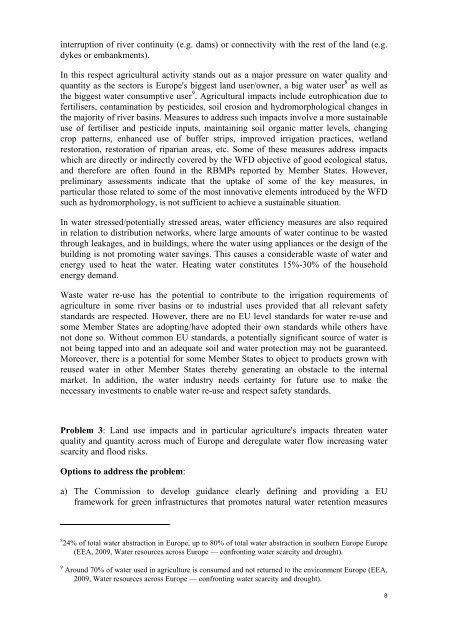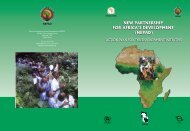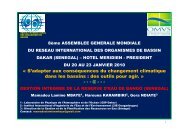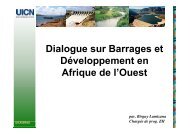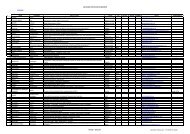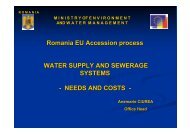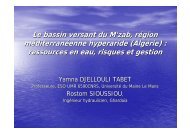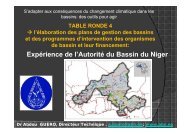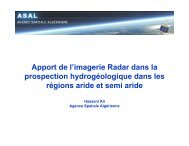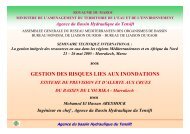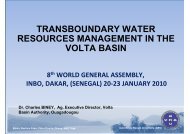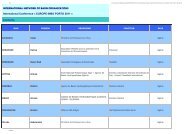background consultation document - European Commission - Europa
background consultation document - European Commission - Europa
background consultation document - European Commission - Europa
You also want an ePaper? Increase the reach of your titles
YUMPU automatically turns print PDFs into web optimized ePapers that Google loves.
interruption of river continuity (e.g. dams) or connectivity with the rest of the land (e.g.<br />
dykes or embankments).<br />
In this respect agricultural activity stands out as a major pressure on water quality and<br />
quantity as the sectors is Europe's biggest land user/owner, a big water user 8 as well as<br />
the biggest water consumptive user 9 . Agricultural impacts include eutrophication due to<br />
fertilisers, contamination by pesticides, soil erosion and hydromorphological changes in<br />
the majority of river basins. Measures to address such impacts involve a more sustainable<br />
use of fertiliser and pesticide inputs, maintaining soil organic matter levels, changing<br />
crop patterns, enhanced use of buffer strips, improved irrigation practices, wetland<br />
restoration, restoration of riparian areas, etc. Some of these measures address impacts<br />
which are directly or indirectly covered by the WFD objective of good ecological status,<br />
and therefore are often found in the RBMPs reported by Member States. However,<br />
preliminary assessments indicate that the uptake of some of the key measures, in<br />
particular those related to some of the most innovative elements introduced by the WFD<br />
such as hydromorphology, is not sufficient to achieve a sustainable situation.<br />
In water stressed/potentially stressed areas, water efficiency measures are also required<br />
in relation to distribution networks, where large amounts of water continue to be wasted<br />
through leakages, and in buildings, where the water using appliances or the design of the<br />
building is not promoting water savings. This causes a considerable waste of water and<br />
energy used to heat the water. Heating water constitutes 15%-30% of the household<br />
energy demand.<br />
Waste water re-use has the potential to contribute to the irrigation requirements of<br />
agriculture in some river basins or to industrial uses provided that all relevant safety<br />
standards are respected. However, there are no EU level standards for water re-use and<br />
some Member States are adopting/have adopted their own standards while others have<br />
not done so. Without common EU standards, a potentially significant source of water is<br />
not being tapped into and an adequate soil and water protection may not be guaranteed.<br />
Moreover, there is a potential for some Member States to object to products grown with<br />
reused water in other Member States thereby generating an obstacle to the internal<br />
market. In addition, the water industry needs certainty for future use to make the<br />
necessary investments to enable water re-use and respect safety standards.<br />
Problem 3: Land use impacts and in particular agriculture's impacts threaten water<br />
quality and quantity across much of Europe and deregulate water flow increasing water<br />
scarcity and flood risks.<br />
Options to address the problem:<br />
a) The <strong>Commission</strong> to develop guidance clearly defining and providing a EU<br />
framework for green infrastructures that promotes natural water retention measures<br />
8 24% of total water abstraction in Europe, up to 80% of total water abstraction in southern Europe Europe<br />
(EEA, 2009, Water resources across Europe — confronting water scarcity and drought).<br />
9 Around 70% of water used in agriculture is consumed and not returned to the environment Europe (EEA,<br />
2009, Water resources across Europe — confronting water scarcity and drought).<br />
8


